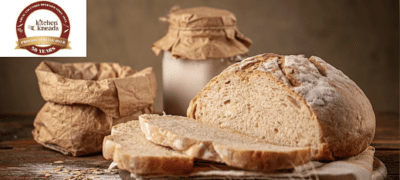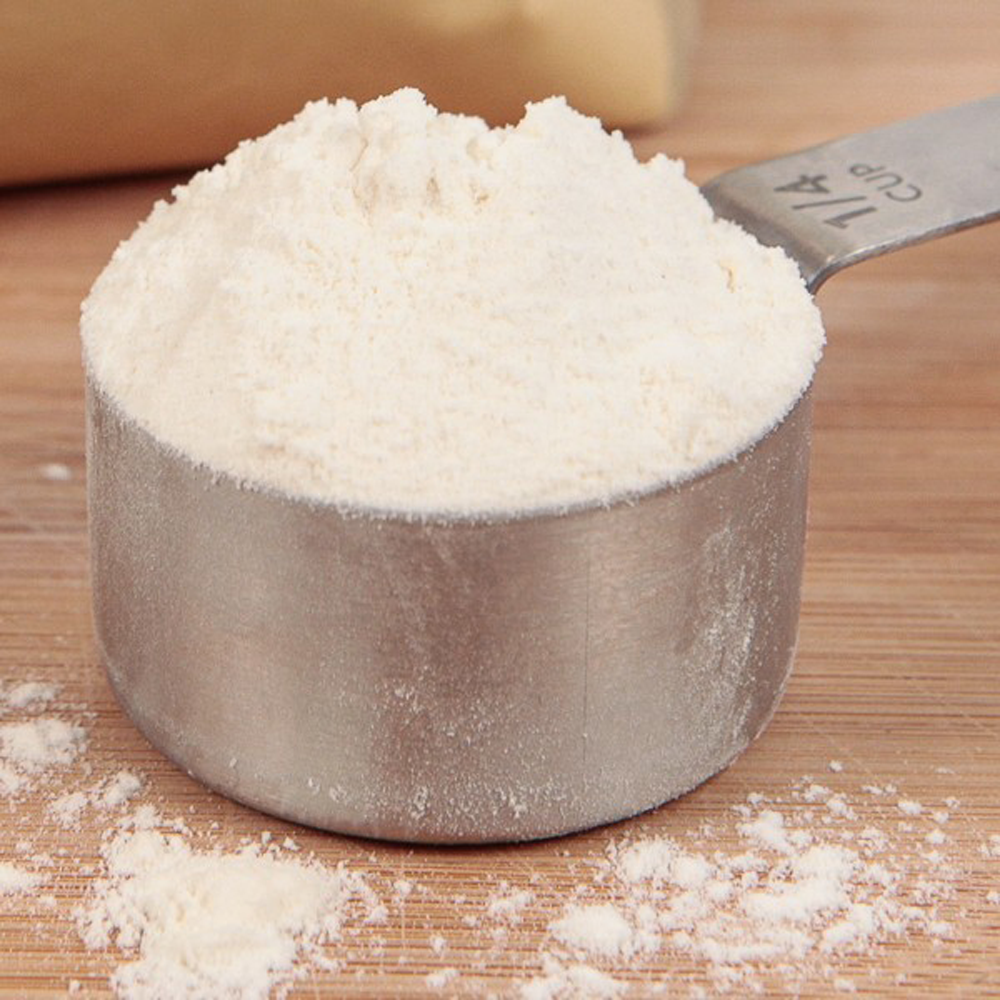In our previous blog, Fresh Vs Store-Bought: Grains And Flour, we discussed the pros and cons of just that. Here, we’ll delve further into the realm of flours into an oft-overlooked area: steel-ground flour versus stone-ground flour.
Both steel-ground flour and stone-ground flour have their pros and cons, depending on what you’re looking for. Here is what you need to know about the differences between these two types of flours so that you can better determine which type is best suited for your specific wants and needs. Let’s jump on into it!

Which Is Healthier?
Ah, the source of much dispute – the question of whether steel-ground flour or stone-ground flour is better for you. If you’re researching this, you’ve likely seen articles arguing in favor of both sides. Some claim that stone-ground is hands-down the healthiest option, while others are adamant that steel-ground is better for you.
If health is what you want, steel-ground is your best bet. If doing things the old way charms you, then you’ll love stone-ground flour. We’ll get into why this is below.
About Steel-Ground Flour
If you’re buying flour at the store, it’s probably steel-ground. This type of flour is made by the grain being crushed by revolving steel rollers. Once milled, the flour is sifted in order to separate out the white flour, wheat germ, and bran. Some of the germ and bran are added back into the flour in order to make whole wheat flour.
About Stone-Ground Flour
Stone-grinding is the way flour was made for thousands of years prior to the invention of steel milling. People still stone-grind their flour to this day. Basically, with stone-grinding, the grains are placed between two large stones. They’re then ground down into flour.
Which Is Hotter?
Both types of flour-grinding generate considerable heat, due to the friction of the process. This can damage the starch, protein, and fatty acids depending on how long the grains are exposed to this heat. This heat is not something that can be avoided, as it’s an inevitable part of creating friction.
Stone mills are hotter than steel mills, and as such, destroy more nutrients. This is because since stone-grinding is slower than steel-grinding, the grain is exposed to the heat for longer. While steel-milling also generates considerable heat, it’s faster than stone-grinding, and as such, the grain is not exposed to heat for the same amount of time.
Which Has More Nutrients?

It’s important to note here that flour has the potential to be healthy and has plenty of nutrients regardless of the method used to make it. What matters is the care taken by the miller during the process. That said, steel-ground flour can have more nutritional value, due to how the miller can add the nutrients back in.
You may assume that stone-ground has more nutritional value than steel-ground. It makes sense – most people assume that the old way of doing something is better and healthier. However, as mentioned in the previous section, stone-grinding is hotter, and ergo destroys more nutrients. Additionally, the stone-grit can result in teeth wear and stomach issues. This flour also has a strong flavor that can be difficult for people to adjust to.
Studies have shown that stone-ground flours can have a greater loss of healthy fats and amino acids than steel-ground flours. You may be puzzled to hear this, since steel-ground flour tends to need nutrients added back in. However, the separation is temporary. The grain constituents are later recombined. This means that compositionally, there may be no difference between steel-ground and stone-ground.
A Word Of Caution About Stone-Ground Flour
If you prefer the idea of stone-ground flour to steel-ground flour, we get it. Doing things the old-fashioned way has a certain romanticism attached to it. Bear in mind, though, that stone-milling is not regulated. While manufacturers like to stress the supposed superiority of stone-ground flour, since it’s not regulated, you can’t be certain of the exact processes used in order to make such flour.

Plus, stone-ground flour has a strong flavor that can take some getting used to. If you use stone-ground flour in your ventures, it may be off-putting to those who aren’t accustomed to the taste of it, ruining the enthusiasm for your no-doubt otherwise delicious kitchen ventures.
Do You Need Flour For Your Kitchen Ventures?
Kitchen Kneads provides all sorts of flours for your kitchen needs. Look through our site or feel free to stop by our physical location in Ogden, UT. Contact us with any questions you may have about our products or cooking classes.











Leave a Reply